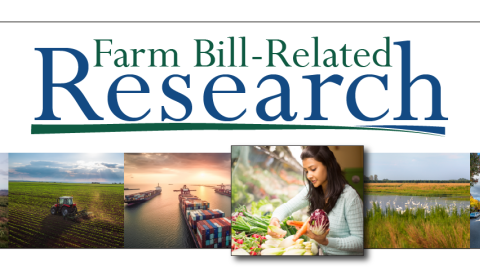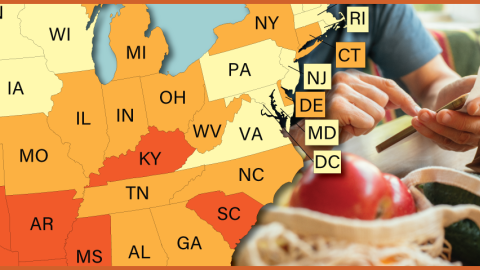Food & Nutrition Assistance
Topics
-
USDA, ERS conducts research on USDA's child nutrition programs and their role in children's food security, diets, and well-being. ERS studies the following child nutrition programs: the National School Lunch Program, School Breakfast Program, Child and Adult Care Food Program, Summer Food Service Program, and After-School Snacks and Meals. Updated charts and data are based on data through fiscal year 2023 (data are as of December 2023) made available by USDA, Food and Nutrition Service.
-
The U.S. Department of Agriculture (USDA) administers food and nutrition assistance programs that affect the lives of millions of people and account for roughly two-thirds of USDA’s annual budget. ERS is the primary source for economic studies and evaluations of domestic food and nutrition assistance programs to meet the needs of USDA, Congress, program managers, program participants, the research community, and the public at large.
-
Food security—access by all people at all times to enough food for an active, healthy life—is one requirement for a healthy, well-nourished population. ERS plays a leading role in Federal research on food security in U.S. households and communities.
-
ERS examines the economic well-being of low-income participants and households in the various food and nutrition assistance programs.
-
The Supplemental Nutrition Assistance Program (SNAP) is the Nation’s largest domestic food and nutrition assistance program for low-income households and is administered by USDA, Food and Nutrition Service (FNS). This page provides an overview of program background and eligibility requirements; recent policy developments; and the scope of USDA, Economic Research Service (ERS) research on how SNAP meets its objectives, including income support and diet quality of its participants.
-
ERS conducts studies of the Special Supplemental Nutrition Program for Women, Infants, and Children (WIC) which serves to safeguard the health of low-income pregnant and postpartum women, infants, and children younger than 5 years who are at nutritional risk. The WIC program served about 6.6 million participants each month in fiscal year 2023, including an estimated 39 percent of all infants born in the United States.




